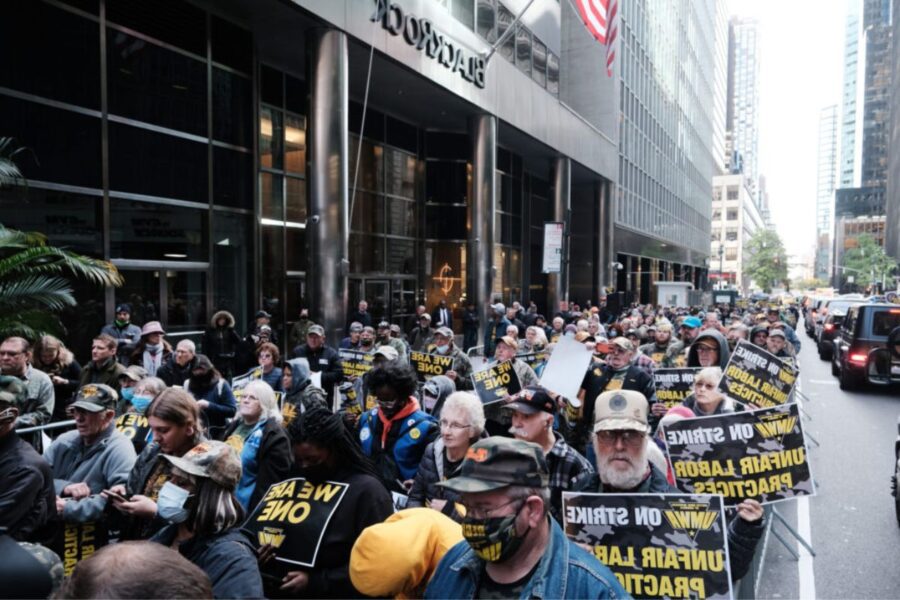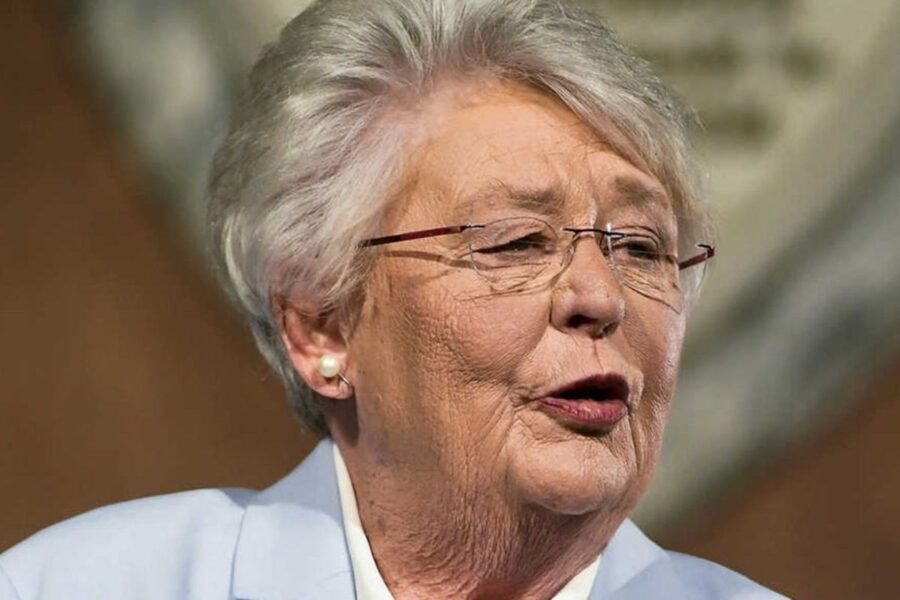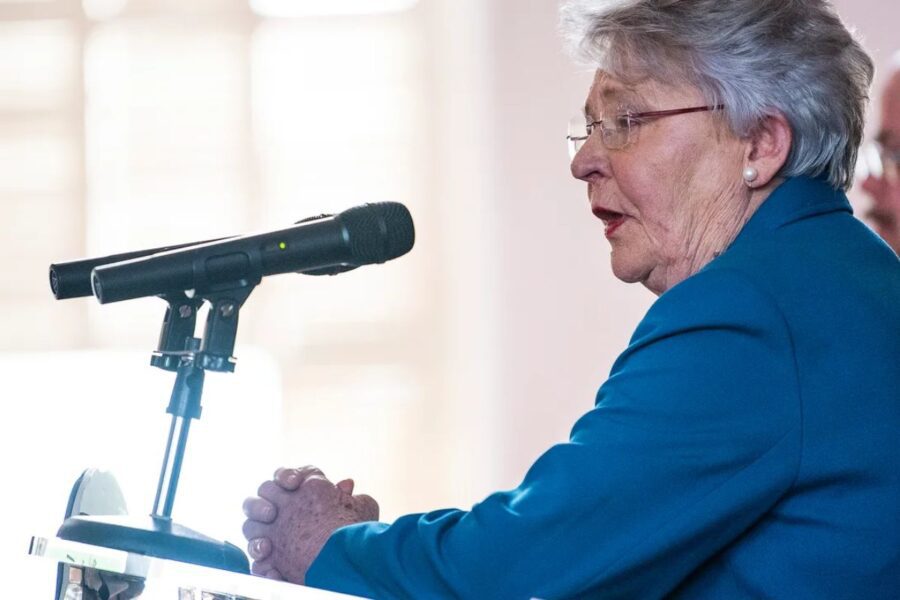Unions and Alabama Economic Model: In the midst of a heated debate surrounding the role of unions in Alabama’s economic model, Governor Kay Ivey finds herself defending the state’s approach. As stakeholders question whether corporate philanthropy or profit-driven choices should dictate policy, political dynamics come into play, with the governor’s stance and voter influence under scrutiny.
While unions play a crucial role in wage negotiations and benefits, this article aims to challenge the prevailing notion, providing an analytical and unbiased examination of unions and Alabama’s economic model.
Key Takeaways
- Alabama’s current economic model, characterized by lower wages, has attracted businesses and stimulated economic growth.
- The state’s competitive advantage in labor costs has encouraged companies to invest and create jobs, potentially jeopardized by unionization efforts.
- The motivations of corporations in choosing locations are questioned, highlighting the need for transparency and accountability in corporate decision-making.
- Governor Ivey’s alignment with billionaires and corporations while relying on votes from hourly workers raises questions about the dynamics in state politics and the influence of voters.
Alabama Governor Kay Ivey Defends Economic Model Amid Unionization Debate
Alabama Governor Kay Ivey staunchly defends the state’s economic model amid a heated debate on unionization.
In her statement, Governor Ivey argues that the current model, characterized by a workforce accepting lower wages, has been instrumental in attracting businesses and stimulating economic growth in Alabama. She asserts that the state’s economic success is directly linked to its competitive advantage in terms of labor costs, which has encouraged companies to invest and create jobs.
Governor Ivey further suggests that unionization efforts could jeopardize this advantage, leading to potential job losses and a less attractive business environment. While her defense of the economic model may resonate with corporate interests, it raises concerns among workers and unions who argue for fair wages and better working conditions.
The governor’s position highlights the ongoing tension between the economic interests of corporations and the rights and well-being of workers.
Corporate Philanthropy or Profit-Driven Choices?
The role of corporations in communities and their impact on workers is a subject of scrutiny, particularly regarding whether their actions are driven by corporate philanthropy or profit. Auto manufacturers, both unionized and non-unionized, have come under scrutiny for their motivations in choosing locations. While these companies are perceived to offer higher wages, there are questions about their true intentions. Some argue that factors like low wages, tax breaks, and profitability are prioritized over worker well-being and community development.
This challenges the perception of corporate benevolence and raises concerns about the impact on workers and communities. The debate surrounding corporate philanthropy versus profit-driven choices highlights the need for transparency and accountability in corporate decision-making. It also emphasizes the importance of considering the long-term consequences for workers and communities when evaluating the actions of corporations.

READ MORE: Governor Ivey Defends Alabama Economic Model Amid UAW Unionization Push
Political Dynamics: Governor’s Stance and Voter Influence
Governor Ivey’s position and the influence of voters on Alabama’s political dynamics are under examination. The paradox of the Governor aligning with billionaires and corporations while relying on votes from hourly workers raises questions about the dynamics in state politics. It suggests that the average worker allows this alignment to persist.
The historical decline of unions in the United States is attributed to party politics, but recent trends indicate a resurgence of interest in unions. Concerns about inequality and wage stagnation may be driving this renewed interest. The Governor’s stance on unions and the influence of voters will play a crucial role in shaping the political landscape in Alabama.
It remains to be seen whether the Governor’s alignment with powerful interests will resonate with voters or if there will be a shift towards supporting unions and addressing workers’ concerns.

Unions’ Crucial Role in Wage Negotiations and Benefits
Unions play a critical role in advocating for fair wages and benefits through negotiations with employers. By representing the collective interests of workers, unions have the power to push for higher pay, improved working conditions, and better benefits.
One notable example of this is the United Auto Workers (UAW) union’s negotiations with Detroit’s Big Three automakers. Through the threat of a strike and subsequent negotiations, the UAW was able to secure significant increases in pay and benefits for its members. This demonstrates the positive impact that unions can have on workers’ rights and economic well-being.
Challenging the Notion: Unions and Alabama’s Economic Model
Challenging prevailing beliefs about the impact of unions on Alabama’s economic model, an examination of the state’s labor landscape reveals a more nuanced perspective. While unions have often been portrayed as a threat to the state’s economic growth, a closer look reveals that they play a crucial role in balancing worker pay and executive compensation.
The recent UAW negotiations serve as an example of how unions contribute to securing fair terms in the workplace. By advocating for higher wages and better benefits, unions ensure that workers are able to maintain a decent standard of living and have a voice in their working conditions.
Furthermore, unions can also foster a sense of solidarity among workers, leading to increased productivity and improved working conditions. Therefore, it is important to challenge the notion that unions are detrimental to Alabama’s economic model and recognize the value they bring to the state’s labor market.

Conclusion Of Unions and Alabama Economic Model
The debate surrounding unions and Alabama’s economic model highlights the complex dynamics at play. While Governor Kay Ivey defends the state’s economic approach, questions arise regarding the balance between corporate philanthropy and profit-driven choices.
Additionally, the political landscape and voter influence contribute to the ongoing discussion. Unions play a crucial role in wage negotiations and benefits, challenging the notion that Alabama’s economic model is solely responsible for its success.
Overall, a comprehensive evaluation of all factors is necessary to fully understand the impact of unions on Alabama’s economy.
Our Reader’s Queries
Who is included in United Auto Workers?
What is the purpose of the UAW?
The United Auto Workers (UAW), officially known as the International Union, United Automobile, Aerospace, and Agricultural Implement Workers of America, is a labor union in the United States (including Puerto Rico) and southern Ontario, Canada, representing a diverse range of workers.
What is the structure of the UAW?
The UAW is segmented into nine geographic regions, each overseen by a Regional Director elected at the UAW Constitutional Convention by delegates from the respective represented region.

